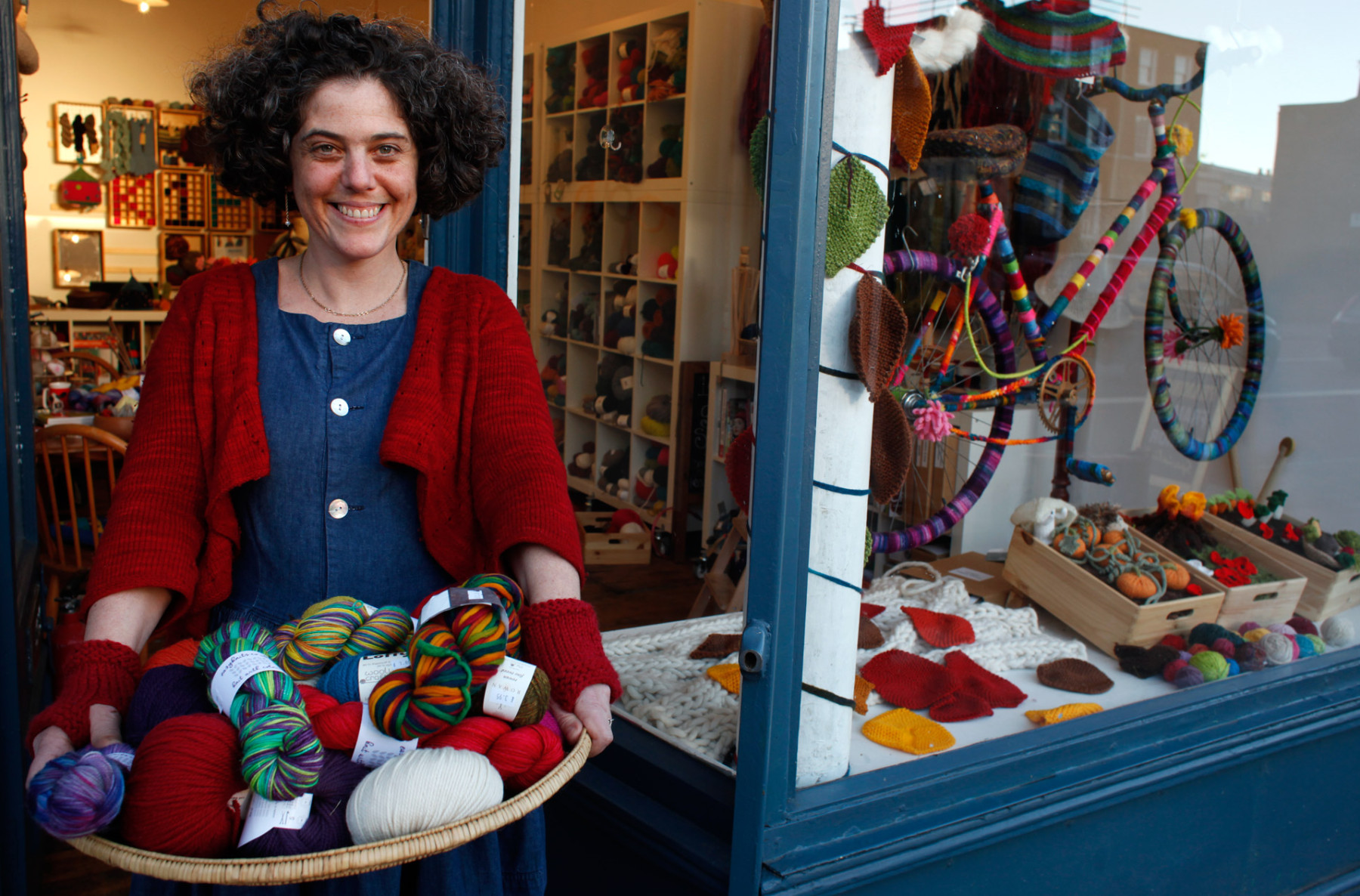For the most part, us knitters have plenty to feel good about – our pastime is good for our mental health, it keeps us and our friends warm, it supports sheep, shepherds and hillsides, and it’s spawned a creative scene that’s full of talented designers. But just in case we need reminding of the imperfect nature of the universe, we also have bobbles.
Bobbles or pills are the bits of fibre that work themselves into balls or tails that stick to the fabric of our knitting, making it look worn and not in a good way. Most unkind of all, there’s no warning sign on the yarn when we buy it as to whether or not these unwanted scoundrels are going to start multiplying once we’ve finished knitting. Your wool can be perfectly smooth when it’s brand new, and still end up looking like you had a bust-up with a burdock bush, once it’s been knitted into a sweater.
So where do they come from?
Let’s go back briefly to how the fibre on sheep gets made into yarn. The sheep’s fleece is essentially made up of a lot of hairs – or fibre. To turn this fibre into yarn, they are spun together into a thread called a ply. For a Single Ply yarn, it ends there, but most yarns are made up of several plies twisted together. All that twisting ensures that the individual hairs from the sheep are held firmly in place to create the continuous length of woollen yarn we need to knit with. Now that would all be fine except that the fibre has a natural inclination to try and untwist its way out of where we want it to stay. So in spite of all the heavy mill machinery that goes into all that twisting, there are some rogue hairs which end up outside of the twist in the yarn, and all it takes is a bit of friction – the sort you get from a sleeve brushing the side of your body – to turn them into bobbles.
So why do some yarns bobble more than others and some not at all?
Partly it’s about the actual hairs of the sheep – the shorter these fibres are (we call this their staple length), the less length there is for the twist to keep a hold of them. And sadly it turns out that many of the yarns which we think of as softest, also have a very short staple length. Merino is an obvious example. The relatively short staple length fibres all get twisted together into a nice soft yarn, and then because they don’t twist very far, it doesn’t take much for them to twiddle their way out and start getting rubbed together into bobbles. But it’s also about the tightness of the twist and the number of plies in the yarn. The more the fibres are twisted, the less likely they are to escape and bobble up. Anyone who’s knitted a gansey sweater with our tightly spun Frangipani Guernsey 5ply wool will tell you that bobbles are few and far between.
So why don’t we just twist them together better?
Well this comes back to our taste for soft single plies and loosely spun airy yarns. Tightly twisted isn’t everyone’s cup of tea, and if soft and lofty is what we want to knit with, we need to be realistic about a certain amount of inevitable bobbleage, and get better informed about bobble mitigating strategies.
So what can we do about the bobbleage?
A first step is to be a bit more adventurous in how we choose wool and step outside the merino soft zone, for now that we understand the link between short staple length yarns and bobbliness, why not check out the wonderful array of yarns from British breeds of longwool sheep like Bluefaced Leicester, Masham, Romney, Cheviot, and Wensleydale. The long in longwool means a longer staple length – better for twisting together and staying there, less likely to escape and bobble.
Another consideration is the kind of knitting you do given the bobbliness of your yarn. If it is a super softy that also carries the risk of being a super piller, using it for a pattern that’s worked at a tighter gauge may suit the yarn much better – so that your knitted stitches come with some extra holding-firm action. Adding in cables and twisty stitches will help even more.
We also need to think about the purpose of the fabric we’ll be knitting. Bobbles may be made out of escaped fibre, but they need friction to actually take shape. Low-friction accessories like hats and scarves which don’t get rubbed against arms, seat belts and shoulder bags are at much less risk of bobbling than a sweater or cardigan.
And then there’s our diamond fibre, Mohair, with its mysteriously bobble-free fluff. Unlike wool, mohair is spun from the fibre of Angora goats, which is very smooth and very long. The smoothness which is relevant here is at the microscopic level of mohair fibre – as it lacks the tiny ‘hooks’ that wool has on its surface. These hooks are what gives sheep’s wool its propensity to stick and lock itself together as it does when it felts and bobbles. Mohair fibres on the other hand, in spite of their fluffy appearance, are too smooth to work themselves into little balls, so regardless of friction, their fluffliness just stays fluffy. And if you knit it together with wool, that fluff can go a long way to preventing stray wool fibres from making bobbles.
But what if I didn’t know any of this in time and made a cardigan which took me ages and cost me £££s and it’s bobbled all over – is it too late?
Don’t be down-hearted. We can sort this out and your cardie will be as great as it was meant to be. It’s important to remember that the bobbles are redundant. Not only don’t we want them. We don’t need them either. If we get rid of them, the fabric of your cardigan will be just as warm and even more delightful. Bobbles can be shaved off with careful use of a normal disposable razor, or more easily with our purpose-made Gleener Fuzz Remover. Or if you don’t mind taking your time, you can use a pair of embroidery scissors to snip the bobbles off, one by one. The bobbles may return after their first pruning, but they’re unlikely to be back again for a third time, on account of all the rogue fibres being gone.
Like most things in knitting, it’s all in your hands.

